When it comes to training for cycling, three-time Tour de France champion Greg LeMond once famously said, “It never gets easier, you just go faster.” That may be true, but you can get smarter in how you train, making the faster part come quicker.
Training isn’t just about the number of hours you spend in the saddle. In fact, the quality of your training is more important than the quantity, explain LeMond and Mark Hom, MD, an avid cyclist and a Johns Hopkins–trained biologist, in their book, The Science of Fitness.
Improving performance, they note, starts at the cellular level by maximizing your mitochondria, the tiny power plants inside each cell that convert food and body fat into energy. Mitochondria not only fuel our cells, they also shield us from free-radical damage and protect us from premature aging. (For more on this process, see “The Care and Feeding of Your Mitochondria“.)
You can bolster your mitochondria by eating a whole-foods diet with plenty of protein and vegetables. Avoid sugar and unhealthy fats, particularly in processed and fried foods, as they disrupt normal cell function and your metabolism.
With your nutrition in check, your healthy mitochondria can then multiply in response to intense exercise, Hom says, so training generates more energy, making you faster on your bike.
LeMond and Hom’s focus on the biology of training is designed for all athletes, but they offer these tips for cyclists aiming to boost their performance.
Cycling Training and Techniques
Resistance Training
Not so long ago, bicycle racers avoided the weight room, fearing that any extra mass would slow them down. Today, that’s all changed. Cyclists recognize the multiple benefits of resistance training — not just for the legs, but for the whole body. This includes building core strength and stimulating and maintaining bone density. Strength is strength, and it ultimately translates into better cycling performance.
Kettlebells are ideal resistance-training tools, providing a full-body workout. They challenge multiple muscle groups and provide asymmetrical training. The momentum involved in the dynamic swings and lifts not only builds slow- and fast-twitch muscles — ideal for steady-state riding as well as sprints and climbs — but it also improves overall balance and coordination.
(For a kettlebell workout, see “The 20-Minute Kettlebell Workout“.)
Hill Repeats
The best training exercise, LeMond and Hom suggest, is not a steady effort at high mileage, but rather intense bursts — high-intensity interval training (HIIT), such as sprints and hill repeats — followed by recovery.
“When you exercise at high intensity, you create more demand for energy inside the cell,” explains Hom. “The intracellular response is a trigger to make the cell build more mitochondrial power plants. That is why fitness is built one cell at a time.
“If you know how this mechanism works and know how to support your mitochondria in a multitude of ways, you will get more out of your training and become a better-performing and more energetic athlete.”
Whether it’s the Tour de France or a club ride, there is one challenge that separates cyclists the most — a long, steep climb. Beginning cyclists associate hills with discomfort and often avoid them. But once you get some miles in your legs, you will find that hills are your best training partners.
“Fighting gravity offers the perfect resistance to put your muscles into the energy-sapped state that boosts mitochondria,” LeMond and Hom write. “Fast-paced climbing and hill repeats are the best methods to trigger mitochondrial biogenesis.”
At the base of a hill, start with a high cadence and low pedal pressure to stay in a comfortable aerobic zone. This method of hill climbing also avoids pumping up the muscles, which can restrict arterial blood flow.
As you surge on the toughest part of the climb, you’ll be out of the saddle, applying maximum pedal force and breathing hard. Although you will be in an anaerobic zone and nearing exhaustion, you will also be multiplying your mitochondria. In a few days, you will find yourself going up that same hill at a faster pace.
Find a challenging hill with little traffic. After warming up, attack it at an increasing pace each lap. For a more intense workout, try riding up the hill using only your large front chain ring. Use the downhill section to recover for the next climb.
This drill not only triggers mitochondrial biogenesis on each uphill section, but it also clears lactic acid during the downhill sections.
Try to ride each hill repeat faster than the last until your performance drops off. “At the top of each hill you should be breathing very hard out of the saddle,” Hom says. You will likely be exhausted after four or five repeats.
This originally appeared as “Riding for the Yellow” in the June 2018 print issue of Experience Life.
Improving Your Pedal Stroke
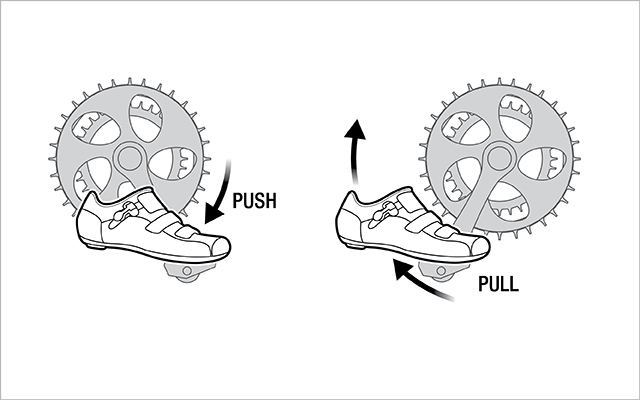 Illustration by Colin Hayes
Illustration by Colin HayesLeMond added a pull-back motion at the bottom of the down stroke and start of the upstroke. Other cyclists considered this a dead zone that wasted energy while not contributing to their forward momentum.
LeMond’s method allowed him to use the powerful hamstrings and hip extensors in the back of his legs — muscles that are also used in running. (It works best if you’re using pedals with cages or straps or clip-in cleats.)
His competitors couldn’t detect any change in what looked to be a normal — albeit smooth — stroke.
The New Science of Fitness
The importance of building fitness one cell at a time, according to Mark Hom, MD.
Legendary Belgian cyclist Eddy Merckx once told aspiring racers that the secret to victory was simply to ride — and ride a lot. Three-time Tour de France winner Greg LeMond ushered in a new approach to training based on quality of riding versus quantity.
“Although gifted with natural ability, LeMond realized that technology and science-based training was a big part of cycling,” notes Mark Hom, MD, an avid cyclist and a Johns Hopkins–trained biologist, who with LeMond coauthored The Science of Fitness: Power, Performance, and Endurance.
“LeMond sought out the best coaches who based their training concepts on physiology rather than lore. His coaches included Cyrille Guimard, Paul Köchli, and Adrie van Diemen. LeMond’s fascination with measuring and tracking performance (VO2 max, heart rate, and power metering) allowed him to make the best use of his training time, track his progress, avoid non-contributing gimmicks, and to monitor his recovery.”
His training was focused on intensity, not just miles. Today, decades later, that style of training has a name: high-intensity interval training (HIIT).
“Most athletes have heard about HIIT since it is now advocated in nearly all modern training books,” Hom says. “We try to explain why and how interval training works.”
Hom discusses why fitness begins at the cellular level.
Experience Life | You say that The Science of Fitness is a different kind of fitness book. What do you mean?
Mark Hom | Greg and I felt that current fitness books were too gimmicky and faddish and barely scratched the surface of what happens deep inside your body when you exercise. Our book is different because it is anti-fad and anti-gimmick. We directly address the fundamental science behind fitness, diet, and exercise — with practical advice to make the science useful. It is also much more than an exercise book since it also tackles the cause of many preventable diseases such as obesity, metabolic syndrome, type 2 diabetes, neurodegeneration, and the aging process.
EL | So, what got you interested in delving so deep into this subject?
MH | My wife, Mary, and I had always been healthy, but during a midlife crisis, we decided not to slip into mediocrity by getting out of shape. My wife and I decided to really ramp up our fitness. For example, in two years my wife went from being a novice cyclist who had trouble riding 3 miles to becoming the female mileage leader in our bike club, riding more than 4,000 miles in one year.
As a doctor, I tried to find a book that would guide us to getting in shape in the most efficient way possible. But there were really no books that answered all of my questions. I did my own literature research of the latest scientific theories of exercise and it always came back to mitochondria — the tiny power plants inside our cells that make energy. Then I remembered how my all-time sports hero, Greg LeMond, had to retire from racing due to mitochondrial myopathy. Once I got Greg interested, it all started to fall into place.
EL | How did you get Greg on board with the book?
MH | I had written a few key chapters and sent the manuscript to Greg, but didn’t really expect a response. It would be like someone writing a book about basketball skills and expecting Michael Jordan to sign on as coauthor! But the response I got from Greg was a 4,000-word email. Apparently, what I had written really connected with him, because it not only explained why he was such a dominant champion but also why he had to retire from racing. Mitochondria explained his entire career, both the highs and the lows. That is why he is the best case-study in mitochondrial biology.
Also, Greg has a very scientific mind. He was always curious about how and why he performed so well, and throughout his racing career he sought out the best coaches and trainers who had backgrounds in physiology. He was always skeptical about unsubstantiated advice and lore, and he read as much as he could about the science. He was about a decade ahead of other cyclists with VO2-max testing, aerodynamics, and power metering — being a real pioneer in his sport. While collaborating on this book, I was amazed by his depth of knowledge. Part of that was his own professional investigation into what would make him a better athlete, but it also became a personal quest when he was diagnosed with a mitochondrial disease.
EL | Can you explain how mitochondria work?
MH | Mitochondria are tiny organelles that live inside each of our cells. They are important because they are our dynamos — they generate the energy we need to live, thrive, and exercise. They use the reactivity of oxygen to convert body fat and food into cell energy. The cell is like a tiny city that requires power plants for energy. Intense exercise demands more cell energy. The cell has a mechanism that is like a city government that allocates resources to build more power plants when there is more energy demand. Mitochondria are a fascinating part of our biology and physiology. They have their own DNA and are inherited from our mothers.
EL | So, we get our energy from our mothers?
MH | Yes, the mitochondria are inherited entirely from the ovum. Maternal mitochondrial DNA is currently used to study ancestry, human migration, and the theory of evolution. It also means that top athletes inherit a large portion of their “natural gift” from their mothers. Mitochondria multiply in response to intense exercise, so if you exercise in the way we prescribe, you get more mitochondria and more energy. This is one of the important themes in our book.
EL | So, to win the Tour de France three times, did Greg have super mitochondria? What does it take to win the Tour?
MH | I know I am a little biased here since he is my coauthor, but Greg was arguably the fittest American athlete of all time. The Tour de France is contested over some 2,000 miles in 21 days. It would be like racing in a marathon every day for three weeks. It’s the most grueling physical contest in the world. Greg won the Tour three times and is now the only legitimate American winner of the Tour. To win the Tour you have to be good at many disciplines. You must have speed and strength to win time trials, aerobic power to climb mountains, and endurance to last until the end. These are all powered by mitochondria. So, Greg was a great all-around cyclist. The Tour selects an all-around athlete, not a specialist.
EL | How did Greg get mitochondrial myopathy?
MH | Greg got his mitochondrial myopathy from lead poisoning. After he won the tour the first time, in 1986, his brother-in-law accidentally shot him while turkey hunting. This nearly killed him, yet he came back from losing 30 pounds of hard-earned muscle and losing all of his fitness to win the Tour two more times, in ’89 and ’90. Greg still has three dozen lead pellets in his body, some inside or around vital organs where it would be too dangerous to remove them.
When Greg exercises for more than an hour his lead serum levels rise to toxic levels. The lead was slowly but surely poisoning his mitochondria and damaging his metabolism. He lives like a normal person — like you or me — but he could no longer compete at the top level. We have an entire chapter about mitochondrial disease and toxicity.
I should mention that our book is endorsed by the United Mitochondrial Disease Foundation (www.UMDF.org), the largest consortium of mitochondrial experts in the world. The UMDF focuses on childhood mitochondrial genetic diseases, but they also recognize the central role of mitochondria in health and in many, many common diseases. I recently spoke before the U.S. Congress on behalf of the UMDF to increase mitochondrial awareness and research funding with the hope of finding a cure.
EL | Does your training program work for all athletes?
MH | Our book is not cycling specific since we get down to the subcellular level of fitness. Our expert advisers included a top competitive runner and a master-class kettlebell strength trainer. For example, weight trainers find our book fascinating because we discuss muscle physiology, the different muscle-fiber types (beyond fast and slow twitch), muscle fatigue (it’s no longer thought to be due to lactic acid), protein synthesis, sports nutrition and hydration, key vitamins and minerals, natural supplements, superfoods, and, most importantly, the energy that powers your muscles, heart, and brain. In the training chapter, I explain how I built up to where I can perform 35 pull-ups in a row — at age 52.
EL | How can athletes boost their mitochondria?
MH | Exercise is the best thing you can do to boost your mitochondria, and we tell you the best ways to exercise. But there are many things you can do to support your mitochondria with nutrition and by avoiding toxicity. For example, antioxidant foods are all the rage. Did you know that they work at the mitochondrial level? There are some antibiotics that can impair your mitochondria (which are related to ancient bacteria), so you don’t want to take certain antibiotics unnecessarily or for a long time. We have a long list of other toxins you should avoid, too, things that could be lurking in your environment, diet, or medicine cabinet. My analogy is that, since mitochondria are inside your body and inside your cells, it is up to you to be a good shepherd to your mitochondrial flock by feeding them, making them stronger, and protecting them.
EL | How do mitochondria protect us as we age?
MH | Mitochondria are at the center of the latest theory of aging, and we have an entire chapter devoted to it. It’s an expansion of the free-radical theory of aging. Your metabolism generates free radicals — basically super-reactive forms of oxygen — that damage the molecules inside your cells. Slowly, over time, this leads to aging. Mitochondria generate some of these free radicals but are also largely responsible for neutralizing these free radicals. Eventually your mitochondria accumulate DNA damage and you gradually lose mitochondrial function. There is really no way to reverse aging. We don’t promise that. But exercise is one of the best ways to slow the process. So mitochondria are not the mythical fountain of youth, but they are the source of your energy. As we get older it is important to stay in shape, keep your inner energy flowing, maintain as much muscle mass as possible, and prevent diseases of a sedentary life such as obesity, type 2 diabetes, and metabolic syndrome. Getting older is difficult enough. You don’t want to get old and have diseases that can be largely prevented with exercise.
EL | So how will your book benefit everyday athletes and people of different ages?
MH | Although LeMond inspired and cowrote this book, it is not an instruction manual on how to win the Tour or the World Championship. It is really meant to help anyone at any age or fitness level to be as energetic and healthy as possible. The importance of exercise in children cannot be overstated, especially in the current era of childhood obesity. In each of our prefaces, Greg and I explain how cycling transformed our lives at an early age. For middle-aged people, it is important to keep exercising or start a new fitness program to ward off preventable diseases and to slow the aging process — at the very age when many people stop exercising. Greg was born in 1961 and I was born in 1962, so we are both at that age when you have to pay even more attention to your fitness, nutrition, and disease prevention. We have different chapters on exercise, nutrition, maintaining muscle mass, slowing the aging process, and staying mentally sharp. So, our book will definitely help people over 50 stay active and live independently for as long as possible.
EL | Your book has 240 scientific literature references. Which studies fascinated you the most?
MH | The NASA studies demonstrate what happens to the human body at zero gravity on the International Space Station. Without gravity challenging their muscles, astronauts typically lose 25 percent of their muscle mass despite trying to exercise every day. Even more dramatically, they lose about 50 percent of their muscle power and have trouble walking once they return to Earth, clearly a case of mitochondrial atrophy. You can apply those findings to a sedentary couch-potato lifestyle that can lead to obesity, metabolic syndrome, and muscle atrophy. Conversely, working against gravity, such as by climbing stairs, attacking a hill on a bike, or strength training, are the best ways to exercise and boost your mitochondria.
Another intriguing study was a five-year comparison study between the typical American, Western diet and the Mediterranean diet. They actually had to cut that study short because the two-year data showed such a marked preponderance of cardiac events in the Western-diet control group that it was unethical to continue the study. Our book breaks down the beneficial ingredients in the Mediterranean diet and also warns about which foods to avoid. I have found that it is much easier to adopt a healthy cultural diet into your life rather than a faddish diet that focuses just on one or two food items.
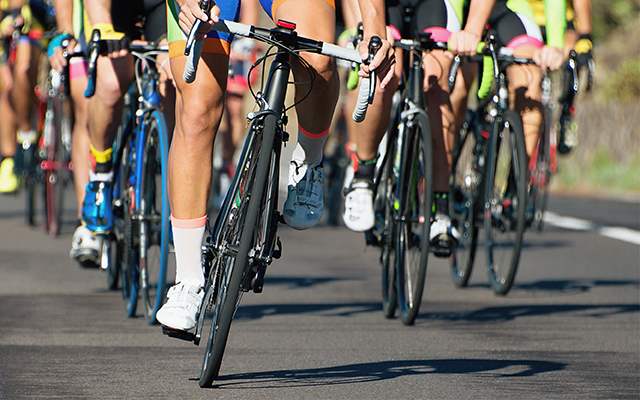
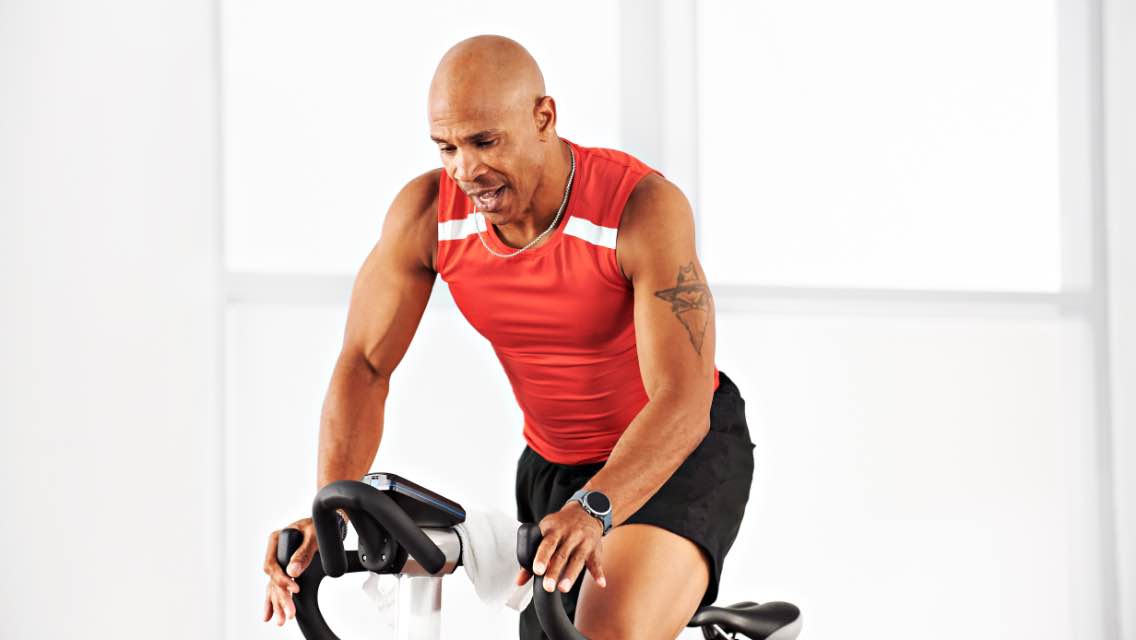
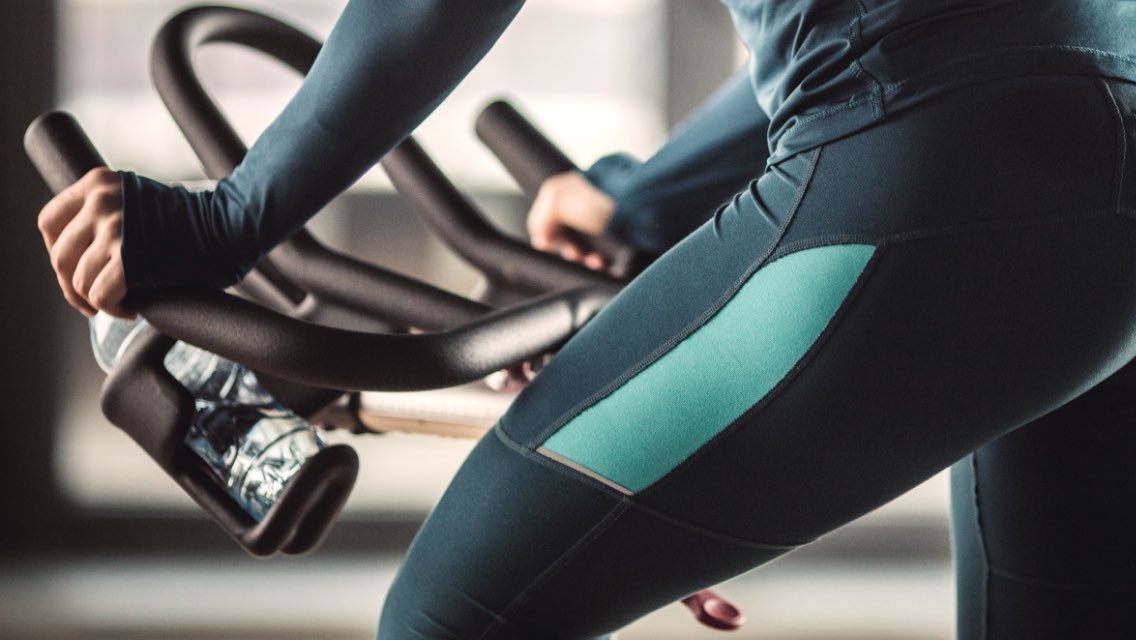
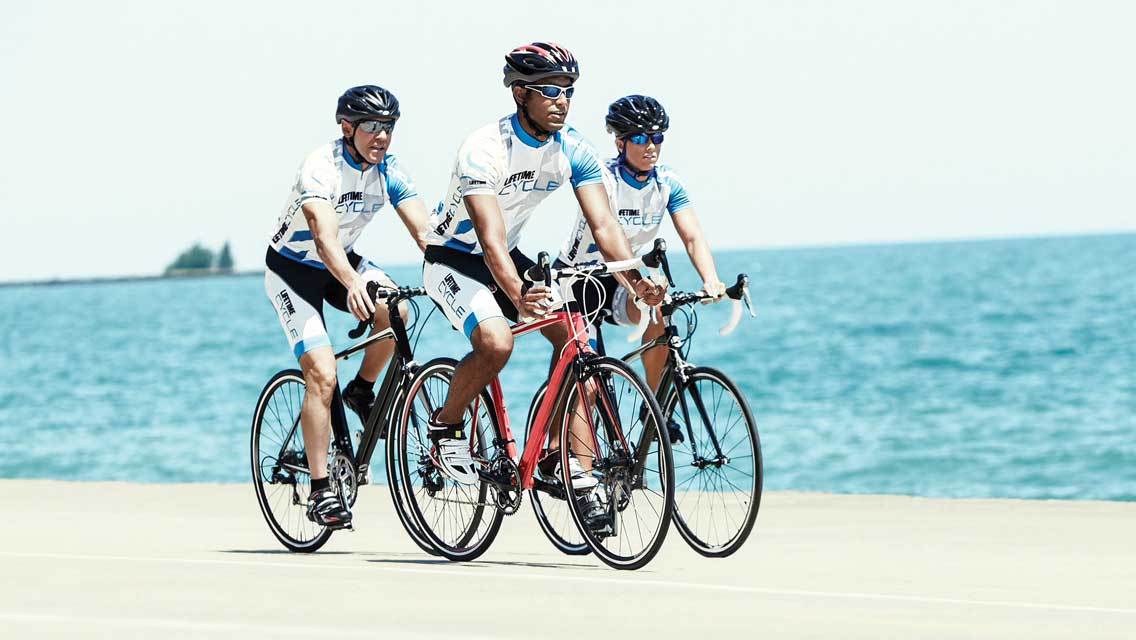
This Post Has 0 Comments